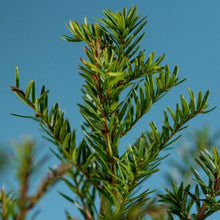properties
The yew is also known as the common yew and the common yew. Botanists like to speak of Taxus baccata. It is a popular conifer with significant ecological added value. It was not for nothing that it was named Tree of the Year 2013 in our brother state Austria. It can grow heights of up to 18 meters and widths of up to 15 meters.
Pollination as well as needlework
Taxus baccata is diocesan. It is an evergreen conifer with brownish and relatively small pine cones. In contrast to other conifers, the yew can come up with red fruits. The flying forest dwellers are particularly happy about this. Taxus baccata can therefore be used as a nutrient for birds. The smooth-edged needles are found on a typical triangular needle leaf.
Soil condition
Taxus baccata is a pleasure with a nutrient-rich and clayey soil variation and a high humus content. Sandy soil is also suitable for planting. Regardless of whether it is sandy or clay: you can't go wrong with a sunny location. A significant planting distance has proven to be useful in developing the magnificent growth.
Provenance
The common name European yew indicates the old continent as a distribution area. Taxus baccata cannot show a coherent distribution area. Natural occurrences can be found in the Mediterranean area in particular due to the lower frost hardness. Accordingly, it is rarely found in Scandinavia. However, it can be found in the German Baltic Sea region and in some parts of Asia Minor.n.
Uses
The possible uses of Taxus baccata can be defined as extremely diverse. Because of the red fruits, as already mentioned, it can be used as a bird feeder. Accordingly, Taxus baccata can be used for the ecological upgrading of forest ecosystems. Due to its high quality wood, the yew is still popular today. This is why it used to be cut down in large quantities. This also explains the endangered stocks. The common name bow wood indicates that yew wood is often used for making bows. The red fruits are classified as toxic. Therefore, the yew was named poisonous plant of the year in 2011. Planting in urban areas is therefore not advisable. Otherwise, we can only encourage you to do your part for the recovery of the Taxus baccata population.n.




